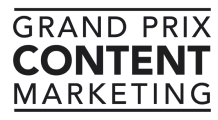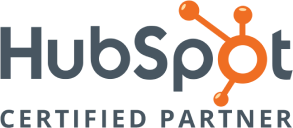Practical guide for marketers: cookies and tracking
- Data intelligence, Growth, Paid ads
The end of an era: Google is going to phase out third-party cookies in Google Chrome by the end of 2024. In addition, Google is not the only one working on this; Meta is also rolling out updates to better protect consumer privacy. Without cookies, are we in the dark? What are the implications for tracking behavior on your website and what about targeted advertising? In this blog we tell you all about the different types of cookies, how to comply with European privacy legislation and how to keep collecting reliable data.
What are cookies?
Let’s start at the beginning: what exactly are cookies? Cookies are pieces of data that are placed in a user’s browser by a website. These cookies contain all kinds of data, such as user IDs, website settings and location. In combination with tracking scripts the data in these cookies are used to (re)target and track users on the web and in apps. Can you track everything people do on your website? There’s a yes and no answer.
Am I allowed to track my website visitors?
The short answer is: yes, you may track. But only with permission! There are various types of cookies, which in turn are subject to different rules. You almost always need permission to place cookies. In the Netherlands, cookies fall under the law of Telecommunications – soon to be called the ePrivacy Regulation – and look after the privacy of users in the context of electronic communication.
These are the different types of cookies:
Functional cookies. No need to ask permission for. These cookies are necessary for a website to work properly.
Analytical cookies.
No permission required: when these cookies are only used to count visitors or when they are set in such a way that the data is only processed to analyze the use of the website.
You should still always continue to inform users about the use of cookies.
Consent is required: When cookies are used to do more than count. For example, if you are going to create remarketing audiences.
Tracking cookies. Permission is always needed. These are the cookies that analyze what you do on other websites. So they are not limited to one website, but store data from multiple sessions.
Remember GDPR? If you have a website where users can log in, you also have to deal with GDPR. In addition to the points above, GDPR also requires that consent is always given explicitly. So you must have the option to say no and refusal can’t negatively affect the use of the website or app.
Please note the following:
It must be clear what consent has been given.
There must be a distinction between analytical and marketing cookies.
There should be no doubt about the fact that permission has been given.
Pre-checking of boxes is not allowed.
Withdrawing consent must be as easy as giving it.
And then there is the distinction between first and third party cookies.
What’s the difference between first and third party cookies? [H2]
First party cookies are stored directly by the domain you visit. Website administrators collect analytical data and store preferences, such as language settings. These forms of personalization improve the user’s experience. That’s why, in general, first-party cookies are accepted by default by browsers. But, only when a user visits the domain are the cookies active. Therefore, you cannot use first party cookies for re-marketing purposes on other websites.
Third party cookies are created by third parties. These are companies – such as Google and Meta – that are not directly involved with your website. Unlike first party cookies, third party cookies are used for tracking, retargeting and ads. Third party cookies also ensure that a website can use certain services, such as live chats.
And second party cookies? Don’t exist! Second party data does: if you sell your first party data to another company, that is called second party data.
What impact does phasing out third party cookies have?
What the world will look like without third party cookies is speculative. Targeting and personalization will become increasingly difficult. But there are innovative workarounds that we’ll tell you about in this blog!
The end of audience targeting?
We don’t want to sound too dramatic, but the end of cookies looks like the end of audience targeting. If all major browsers no longer support third party cookies, targeting is unavailable for 99% of users. Retargeting on website visitors is close to impossible if people do not accept your cookies.
A negative consequence for users is that they see the same ad much more often. Without this so-called frequency cap, the frequency of ad impressions can no longer be monitored. How very annoying!
A lack of personalisation
A recent report from Google stated that a lack of personalization in ads could lead to 50-70% less revenue from ads. Since cross-site targeting is no longer possible, non-personalized ads will take over the web. ROAS will therefore suffer greatly with the phasing out of third party cookies.
Is this new?
Not quite. Currently, the placement of third party cookies is already blocked in about 36% of all internet users. This is because browsers like Safari and Firefox have been blocking third party cookies for years already. Although Chrome is not the first browser to phase out third party cookies, it is by far the largest. Worldwide, Chrome has a market share of 64%. And more than half of all global internet traffic comes from Chrome!
Good marketing without third party cookies? Here’s how!
The disappearance of third party cookies is not the end of tracking or online marketing. There are smart solutions to deal with the changes in the tracking landscape. Just about the entire online industry is working hard to close the gap created by the limitation of tracking and targeting options.
Specifically, we’ll go over ways to keep reaching your target audience effectively!
Hey Google, help!
Google is already working on solutions that will eliminate the need for user-level tracking. For example, you can use conversion modeling, rely on first party data, deploy the Privacy Sandbox, and prepare your Google Ads account for the future.
1. Use conversion modeling
Conversion modeling estimates expected conversions based on available conversion data. To get the full picture is impossible due to privacy and technical limitations, so machine learning is applied to conversion data. This way, marketers still have an idea of how users convert after seeing an ad.
The image above shows that less and less exact data is available and therefore more and more modeling is required. It is imperative that your settings are correct, otherwise Google will model on incorrect data.
How does conversion modeling work?
Google models conversions through Google Consent Mode. Google Consent Mode is a flexible solution for how Google tags are loaded based on user consent. When consent is given or withdrawn, Google tags are dynamically updated.
Once consent is not given, Consent Mode will use conversion modeling to fill in the gaps. This allows you to gain insight into more than 70% of your ad-click-to-conversion journey, allowing you to still measure the impact of your campaign. In a safe way! You can implement Google Consent Mode via your source code or via Google Tag Manager (GTM).
2. Commit to first party data
The most holistic approach is to collect first party data. First party data is data that people willingly give to you. For example, when they create an account to complete a purchase or download an e-book in exchange for their email address. The data that users willingly provide is a precise and safe way to gain insight into the performance of your marketing efforts. And the best part is: this data is not available to competitors!
As the use of third party data decreases, it becomes more important to build a good relationship with your customers. The better you get to know your customer, the more data you have available. The best way to do that is by using Marketing Automation Platforms or Customer Data Platforms. Then you’ll be able to deploy email marketing and effectively reach your target audience: the best way to communicate with your entire customer base in a personalized way.
Server-side tracking
If you combine the collection of first-party data with server-side tracking, then you have even more data under your control. Normally when someone visits a website, a piece of code is loaded into the browser. This is then forwarded to Google or Facebook and the like. But, with server-side tracking, there is another step in between. You might have guessed it: there is a server in between. How?
Data from your website goes via a server to the third parties. You control the server. And because you manage the server yourself, you influence what happens to the data. In addition, the data is of a higher quality because annoying bot traffic is filtered out before it ends up in Google Analytics.
3. Use Cloud technology
Cloud services, like BigQuery, encrypt data, ensuring privacy and security instantly. The cloud is less susceptible to a leak of personal data and with machine learning you “teach” Cloud tech to predict future data based on historical customer data. The use of Cloud technologies is pretty much an upward spiral. Hear us out!
Because your data is safely stored in the cloud, you can use it for automation. And because it is so useful for automation, more data will become available. In this way, you get closer to the truth and your marketing becomes more and more efficient and accurate. The upward spiral, like we said.
4. The Privacy Sandbox
The Privacy Sandbox is a feature within Google Chrome and another name for Federated Learning of Cohorts (FLoC). Through FLoC, Google can analyze behavior of Chrome users locally by looking at your browser history. Based on this, users are placed in target groups based on interests. Your data is thus anonymized because you are just one of many in such a target group. The advantage of this is that there are no cookies involved.
Companies can therefore show relevant ads without ‘compromising’ the privacy of users. Companies can’t see who you are, but Chrome can. And this gives Google a greater position of power. FLoC testing for advertisers will start in 2023, but countries that fall under GDPR and the ePrivacy Regulation (including the Netherlands) are not participating for now.
5. Activate data via automation
Google offers a number of automation solutions to ensure that your campaigns perform even better. Unfortunately, nobody – except Google – knows how these automation solutions work. What we do know is that there are a number of preconditions for these automation solutions to do their job optimally.
All conversions on your website should be measurable with tags in Google Tag Manager;
Cookie consent must be set properly;
You need to have sufficient first party data.
By combining conversion modeling and automation, you get the most out of your first party data. If you combine first party data with other data points, such as your advertising accounts and data from your email marketing tool, then you can use machine learning to fill in the data gaps. This way you know what the contribution of each marketing channel is and where you need to make adjustments.
Make your advertising platforms ready for the future
Above we mentioned ways to keep collecting data, but a few settings within Google Ads will ensure that your campaigns continue to perform well. We list them here:
1. Enhanced conversions
Enhanced conversions is a feature within Google Ads conversion tracking that provides better insight into how users convert (with consent) after seeing an ad. This works by sending hashed user data from the website to Google. This data is then matched with logged-in Google accounts, allowing conversions to be awarded in a secure manner.
Implement enhanced conversions using:
GTM
Global site tag
Google Ads API
2. Fully automated campaigns
Use fully automated bidding strategies. These perform better than manually managed campaigns. Start with:
Smart Shopping – to generate e-commerce sales at your target ROAS.
Local campaigns – to drive store visits.
App campaigns – to encourage users to download your app or use it more often at your target CPA or ROAS.
Video action campaigns – to generate more conversions via YouTube.
Discovery Ads – to drive more conversions on feed-based products.
In addition, Google is now testing Performance Max campaigns: a combination of Google Shopping, Search, Display and Video ads. So with one campaign you have multiple advertising opportunities.
3. Switch to modern Search campaigns
Search campaigns have changed radically in recent years, and with that, the best practices. All the best practices around privacy are called ‘modern Search’. This means that within Search campaigns you should use:
Smart bidding.
Data driven attribution (if possible – never use last click or first click model).
Responsive creatives.
Broad match keywords (only with conversion-based smart bidding).
DSA campaigns.
Similar audiences and target expansion.
Use smart audiences in Analytics.
Smart lists – remarketing
Available from 10,000 daily page views and 500 transactions per month.
Create engaged audiences based on the ‘Session Quality’ report in Analytics.
Available from 1,000 e-commerce transactions per month.
Create engaged audiences based on the “Conversion Probability” report in Analytics.
Available from 1,000 e-commerce transactions per month.
4. Invest in brand awareness
More and more budget goes to targeted performance marketing: anything to get consumers deeper into the funnel. But how do you get them there in the first place? We’re talking brand awareness! But, investing more in brand awareness is not always easy. ROAS will drop in the short term and it may take several months for the added value to show up.
Nevertheless, it is increasingly important to think out the entire funnel from start to finish in your marketing strategy. Look at all results, instead of just the results from paid marketing efforts. Performance branding is the way to fill your sales funnel and transform strangers into fans with brand awareness. You have to start somewhere in facilitating a purchase. Therefore, invest in the top of the funnel in order to end up with more at the bottom.
How to do it the right way?
Read the why, how and what of performance branding.
What’s next?
The changes in the tracking landscape are impacting targeting. But fortunately there are several ways to deal with this. Your campaigns will continue to run like clockwork and you’ll still get visible revenue from advertising. If, and only if, you’ll be willing to do the following. In short:
Make use of smart advertising options
Give Google as much “smart data” as possible. So use smart bidding, responsive creatives and enhanced conversions. In addition, use smart targeting based on Analytics reports. And remember kids: always apply data driven attribution if the option is available in your account!
Optimize your technique
Optimal technology is safe technology. Make sure you ask permission for cookies via a consent management platform. In addition, implement Google Consent Mode and install your tracking in such a way that tags are only fired after the proper consent. In combination with Google Analytics 4 you will gain the right insights and be GDPR proof.
Use other platforms and applications
Put your money where your mouth is and make use of data-driven platforms. We are of course talking about Marketing Automation Platforms and Customer Data Platforms. Collect as much first party data as possible, add a healthy dose of machine learning and you get the ball rolling. The best way to collect data is data that users willingly give you. Keep enriching your email marketing database at all times and build a warm relationship with your customers and prospects.
Do you want to keep doing good marketing? Then the above investments are your buy-in to a future-proof organization.
Need some help? We’ll be more than happy to assist you. Contact us and stop by for lunch!
Related news
You may ask us anything
Or just stop by to say hi. We are thrilled to think about your challenges.

Let us contact you






